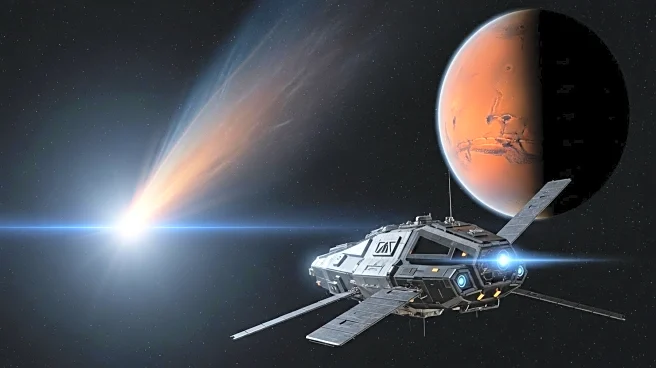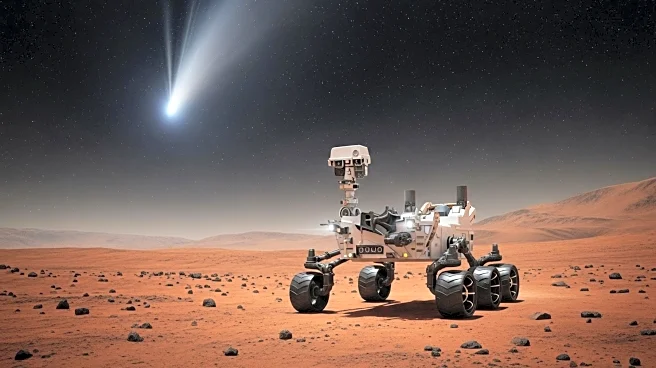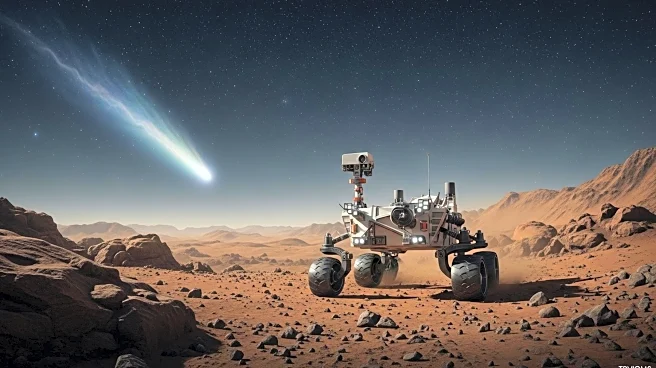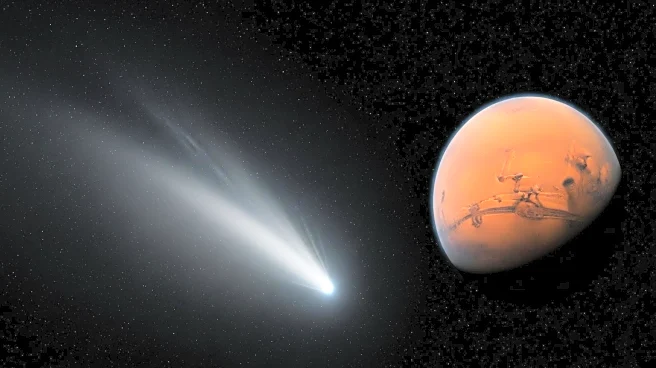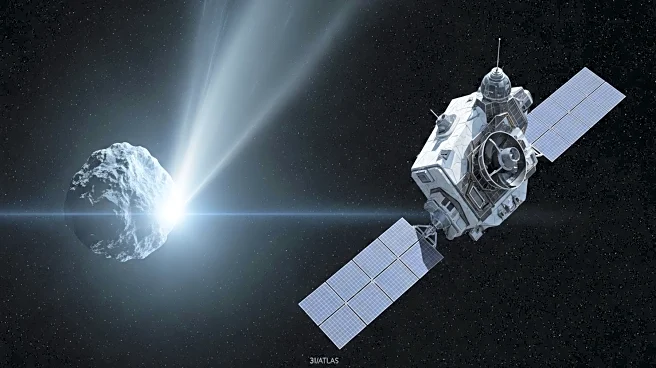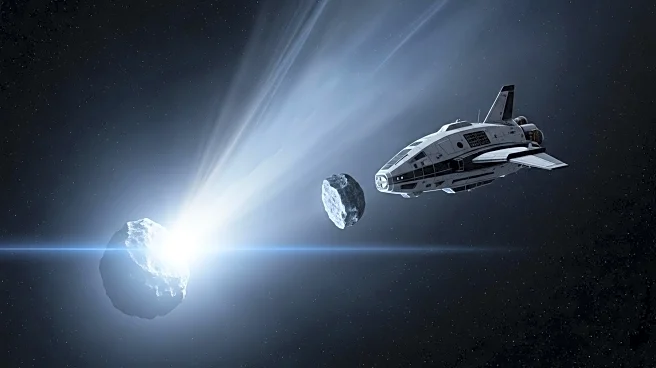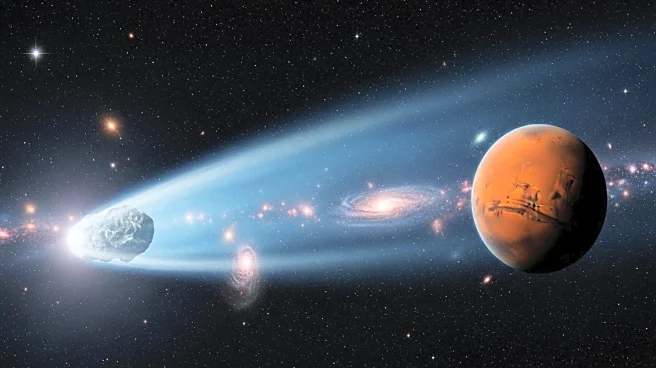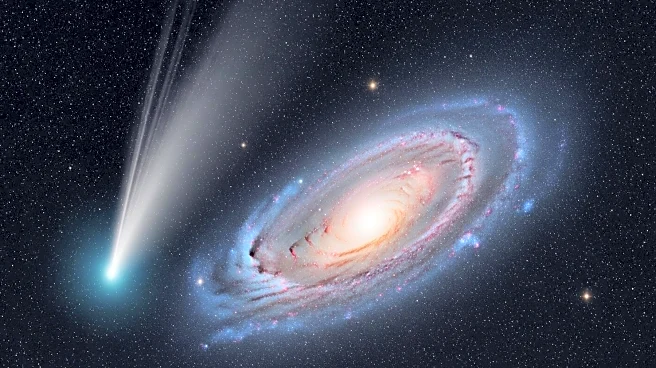What's Happening?
The European Space Agency has released images of the interstellar comet 3I/ATLAS, captured by two Mars orbiters as it passed approximately 18.6 million miles from Mars. The comet, only the third interstellar object confirmed in our solar system, was observed as a bright, fuzzy dot against a starry background. The images were taken by the ExoMars Trace Gas Orbiter and Mars Express, with the former successfully capturing the comet despite its faintness. The comet poses no threat to Earth and is expected to make its closest approach to the sun later this month.
Why It's Important?
Interstellar comets like 3I/ATLAS provide valuable insights into the composition and dynamics of other star systems. By studying these objects, scientists can gain a better understanding of the materials and conditions present in distant parts of the galaxy. This knowledge can inform theories about the formation and evolution of planetary systems, potentially impacting future space exploration and research. The data collected from these observations could also enhance our understanding of the solar system's interactions with interstellar space.
What's Next?
The European Space Agency will continue to analyze the data collected from the Mars orbiters, combining images to detect the faint comet. Additional observations are planned as the comet approaches the sun, with the potential for further insights into its composition and behavior. The comet is expected to become visible again in early December after passing behind the sun, providing more opportunities for study.

